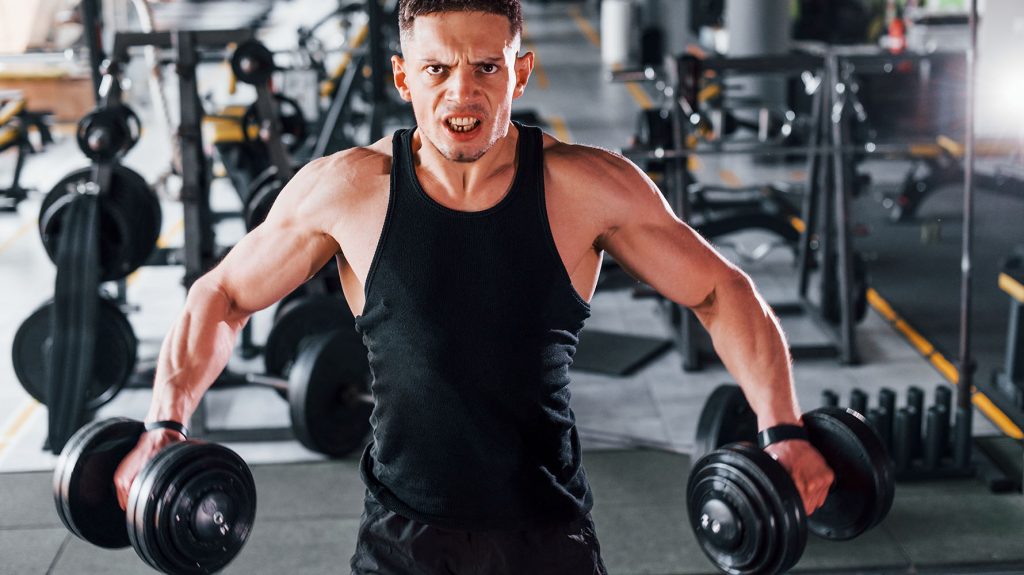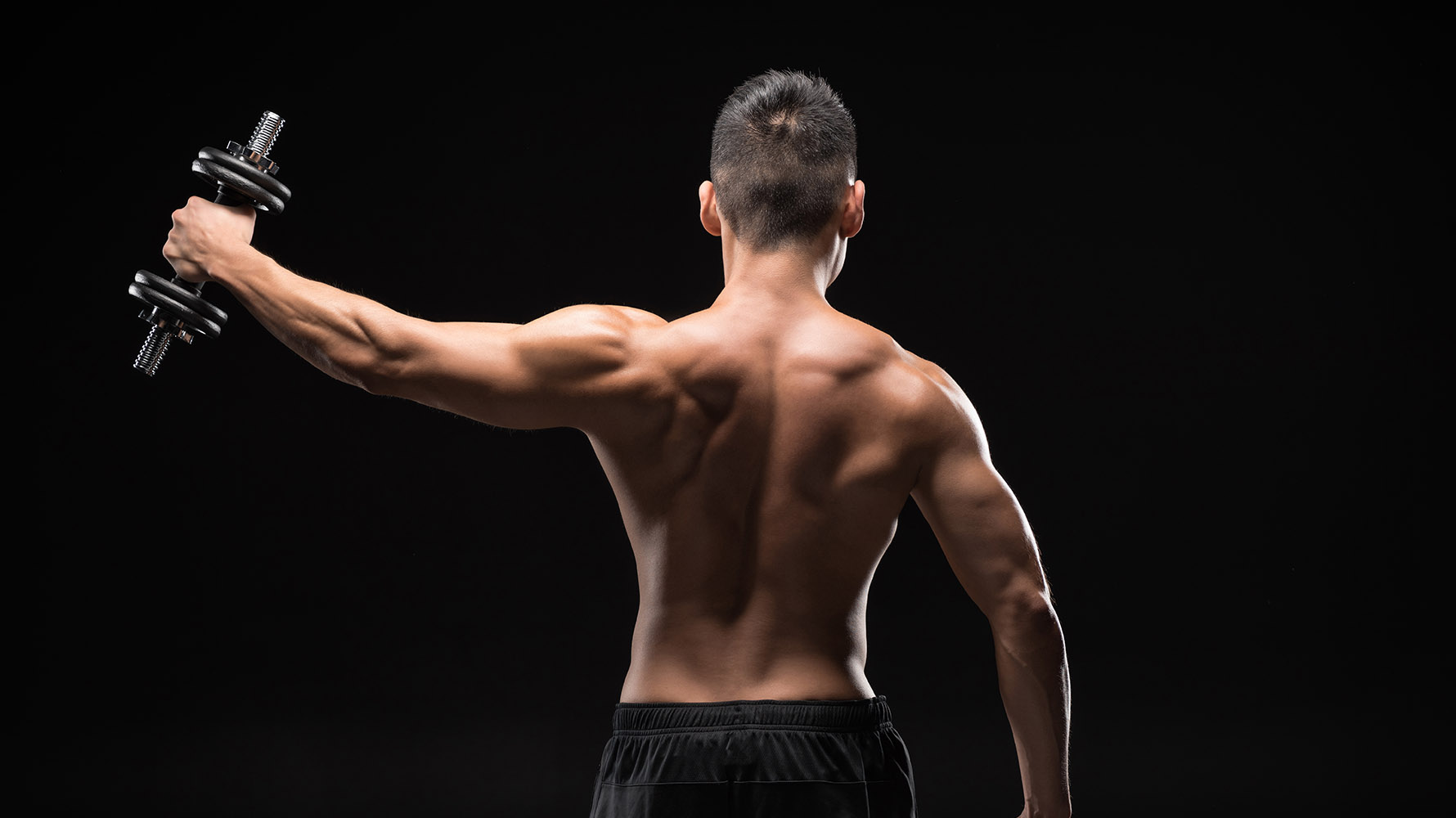Every man dreams of having broad shoulders. The best deltoid exercises at the gym allow you to achieve this. Let’s look at the features of shoulder training, exercises for them and also a possible program option for their regular and systematic training.
Table of Contents
Anatomy of Deltoid Muscle
First of all, you should understand that the shoulders are made of deltoid muscles, these triangular shaped muscle groups have been known as the “delta” due to their triangular shape. The nickname for these muscles within the fitness world are “delts”. Although the shoulders in the anatomical sense are not the same as the shoulders in the common sense.
From an anatomical point of view, the shoulder is the humerus (the arm consists of the shoulder and forearm). From the point of view of ordinary people, the shoulders are the horizontal sections of our body located on the sides of the neck, as well as the muscles located on the sides in the upper part of the arms (deltoids).
Thus, these deltoids are the very “knobs” that, at a certain level of development, have an aesthetic rounded shape, and visually make the shoulders wider (expand the silhouette).
The deltoid muscles are subdivided into anterior, middle and posterior bundles. They should be trained with different exercises. Each bundle is responsible for abducting the hand in different directions:
- Front – forward and up
- Medium – to the sides and up
- Rear – back and up
The main volume of the shoulders is provided by their middle part (middle or side deltoid). However, the developed front and rear deltoids look very impressive and add extra volume to the shoulders.

5 Best Deltoid Exercises for Mass
1. Dumbbell Lateral Raise
In our opinion, side raises with dumbbells are the best exercise for the middle delts. Some people claim that presses and broaches work better, but in our opinion they do not.
Although the raises are sometimes called swings, it would still be more correct to call them not swings, but lifts or abductions of the hand to the sides.
The fact is that the pure technique of performing this exercise provides for the absence of jerks and accelerations. That is, dumbbells should not be thrown upward with a forced swing, but raised “honestly”, due to muscle effort, in a strict power mode a stabilized raise, is much more efficient.
And the word “swing”, in its meaning, more closely resembles the movement “on a grand scale”. Although such a play on words is not of fundamental importance to us, we still consider it necessary to discuss this point separately.
The arms can be kept completely straight or slightly bent when lifting. Both options will be correct. You need to raise your hands to a horizontal position. They should not be raised higher, since this will include not only deltas, but also trapezoids in the work. It’s not scary, but now we are talking specifically about delta training.
Raises are most often performed with dumbbells, but there are some specifics here. In any exercise, including raises, it is advisable to increase the working weights gradually. Ideally, as small a step as possible.
Progression of Working Weights
That is, it is better to periodically add 0.25-0.5 kg than immediately add 5 kilograms and stay at this weight for a long time. This applies to raises to a much greater extent than to such strength exercises as presses, deadlifts and squats, because they use relatively large weights, and in raises, these use significantly less weight loads due to the length of the load from the body adding extra strain.
But this is often the problem. Not in every gym you can find a wide row of dumbbells, with a large set of dumbbells of a wide variety of weights. And when there are 3 types of dumbbells in the gym, say, 10, 15 and 20 kg each, then there can be no talk of any gradual weight gain. Even 10 and 15 kilograms is a very big difference for raises and most beginners will not even be able to do one raise with the lowest 10kg weight.
This problem can be solved by using ordinary barbell weight plates or “pancakes” as some call them, instead of dumbbells. A set of weight plates in most gyms are significantly better than a set of dumbbells, so you can always find the right combination of weights.
You can simply stack a few weight plates together and grab them by the center hole, lifting them just like dumbbells. For example, you want to set the weight at 7.75 kg. Then you just take three pancakes for 5 kg, 2.5 kg and 0.25 kg. Thus, the load can be dosed very accurately.
Let’s say right away that this can be inconvenient. Especially when you are already approaching large weights, and you have to use a large stack of weight plates and the plates themselves are heavy. Sticking your fingers through the holes of the plates can be problematic (the hand is large and the hole is small). The weight plates are very thick and can be difficult to hold. The last plate will have to be held with the very tips of your fingers. The edges of the holes press hard on the fingertips, which leads to painful sensations. And starting with a certain weight, you will come to the conclusion that you simply cannot hold them any longer.
Therefore, we must admit that this approach is only a necessary measure. But it is quite suitable to use if you are doing your raises with light weight. Also, you can offer another option for gradually building up weights by combining dumbbells and weight plates.
Alternative Way
You can try to hold both the dumbbell handle and small weight plate at the same time. With one hand. Just by pressing the plates against the handle. But this is also very inconvenient. This opens and looses your grip and because of this, you will not be able to fully concentrate on the exercise.
Therefore, we can offer another option that will allow you to firmly and fully hold the dumbbell handle.
The method is that you take ordinary wrist straps (which are used to perform deadlifts with large weights), and thread this belt through the required number of small weight plates. Then you can take the ends of the belt in your palm, so that the hanging plates are as close to your hand as possible. And already in this way, with a belt in hand, grab the handle of the dumbbell.
At the same time, the grip does not suffer at all and it turns out to be as dense as possible. This does not cause any discomfort.
Let’s say you have dumbbells weighing 10 kg and you need to set the weight at 10.75 kg. Then you take these dumbbells, and on the belts on each side you hang small plates of 0.5 and 0.25 kg. Thus, by combining different combinations of weight plates, you can gradually reach a weight of 14.75 kg, and then take dumbbells weighing 15 kg, and start the combination again.
It is unlikely that someone told you about such tricks before. These methods were developed as a result of many years of our own training experience in gyms with a wide variety of equipment.
If you do not want to be smart and improvise with the use of weight plates, or if you have reached very high weights, then another alternative is to take a barbell and perform barbell lifts on deltoids instead of raises. We will discuss this exercise below.
2. Dumbbell or Barbell Front Raise
Raising dumbbells or barbells in front of you trains the front deltoids. You can perform this exercise both alternately with both hands, when using dumbbells, you can alternatively raise one hand and lower and then repeat with the alternate hand, or raise both hands together.
All recommendations for accurate dosing of the load are completely similar to the recommendations from the previous exercise.
An alternative to exercise with dumbbells in this case would be to raise the barbell in front of you on straight arms. When using the barbell to perform front raises, both hands are used to be able to hold the bar at shoulder-width apart (unless you are super strong and can lift the barbell using one hand), then this can be done alternatively.
3. Dumbbell Bent-Over Lateral Raise
Bent over raises are a great exercise for the rear delts. You can do this while standing, but it is better to do it while lying on your chest on an incline bench. In this case, the angle of inclination will always be the same.
An alternative to bent-over raises with dumbbells can be a barbell pull in an incline to the chest (not to the belt, as in the classic bent-over row), with a wide (important) grip. This will not be as effective to isolate the rear deltoids, but is still an alternative option.
4. Upright Barbell Row
The classic pulling of the bar to the chin is performed with a narrow grip. At the same time, the elbows are raised as high as possible above the level of the shoulders. This option is perfectly acceptable. This will also train the deltoids (mostly the middle deltoid), but with this option, the trapezius muscles will also work actively.
A specialized broach option specifically for deltoids implies a wide grip. If, at the same time, the bar does not move forward (the forearms look down), then the rear deltoids will work actively. If the barbell is brought forward (the forearms lift the bar forward and upward when lifting), then the middle deltoid muscle will actively work.
5. Dumbbell Press
Presses are basic exercises and work many muscles, not just the deltoids. The work includes the upper pectorals, traps, triceps and deltoids as well.
During the presses, the front and middle deltoids work mainly. The back deltoid can only be used when doing a dumbbell overhead tricep extension.
Shoulder Workout Program at the Gym
If you do not set the task of training the shoulders strenuously, and the deltoids are just one of the muscles you are interested in, along with other muscles, then you can use any a classic program in which deltoids will somehow be involved in basic or isolated exercises. In most cases, this approach will be the most correct and universal.
If you want to specialize in the shoulders, then the best solution would be to make them work on a separate training day. That is, for example, if you train 2-3 times a week, then 1 or 2 workouts should be basic for all muscle groups, or these days you can specially train some other muscle groups and one of these workouts should be dedicated only to the deltoid muscles (shoulders).
For example, compound-isometric-deltoids, or biceps-isolated-deltoids, etc.

You can combine the workouts at your discretion, we will only suggest a possible workout option on the day of the shoulder workouts for the deltoids.
Here’s what we recommend to hit every deltoid muscle in your shoulder workout:
- Side raises with dumbbell – 15 *, 10 – max – max – max;
- Front raises with dumbbell or barbell – 15*, 10 – max – max – max;
- Rear raises while on an incline – 15*, 10 – max – max – max.
Yes, just three exercises. Do not be confused by this. Although there are three of them, they allow you to work out all the bundles of deltoids and give them maximum power stress, which will make them grow.
The asterisks represent warm-up sets with weights about half the weight of your working weights. Then there are 4 approaches, one warm up set and three working sets.
On the first working set, you try to hit 10 reps. The working weights are selected in such a way that you can perform 7-10 repetitions with fresh, tireless muscles in the first set.
In sets 2, 3 and 4, the number of repetitions does not really matter. Just do as many reps as possible with the same weight to failure. The most important thing is the first approach.
That is, repetitions can be distributed among sets like this: 10-7-5 or 9-6-5, or somehow differently. This will vary on the individual. As long as your are working the muscles until failure within the last few sets, that is all that matters.
Rest between sets – 2 minutes.
On other training days, try not to overload your deltoids within other exercises, so that they can recover as much as possible.
Conclusion
These deltoid exercises in the gym will allow you to tighten up your lagging deltoids and improve their shape literally and figuratively, giving you those broad and muscular shoulders that you always dreamed of.

